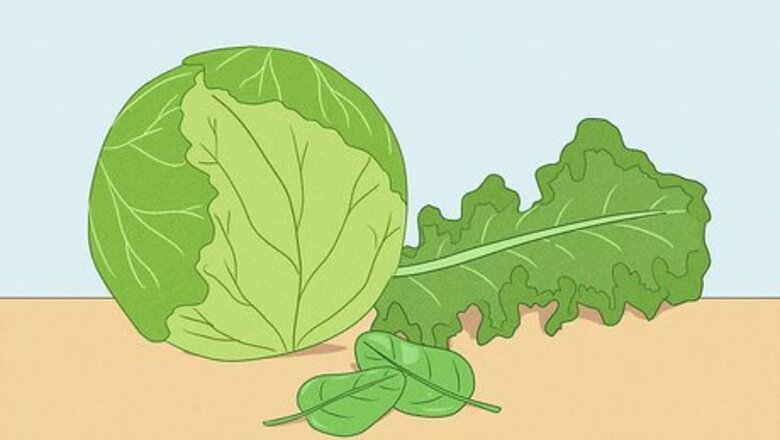
views
- Fill up on whole, healthy foods, like veggies, fruits, lean proteins, and fiber-rich grains, legumes, and beans. Avoid extra sugar and liquid calories.
- Do exercises you enjoy. Play a sport, join a workout class, or hire a personal trainer. Lift weights and do aerobic workouts to burn even more calories.
- Maintain a healthy lifestyle by getting good sleep every night, cutting back on alcohol, and drinking plenty of water throughout the day.
- Be patient and remember that weight loss takes time. Weigh yourself once a week to track your progress.
Eat plenty of fresh vegetables.

Choose leafy green veggies like kale, cabbage, and spinach. Leafy greens are filling, high in nutrients, and low in calories—the perfect combo for losing weight. Mix them with low-calorie dressing for a healthy salad, or enjoy them as a side dish with lunch or dinner. Leafy greens are generally high in fiber, which helps your digestion and keeps you feeling full.
Get protein with every meal.
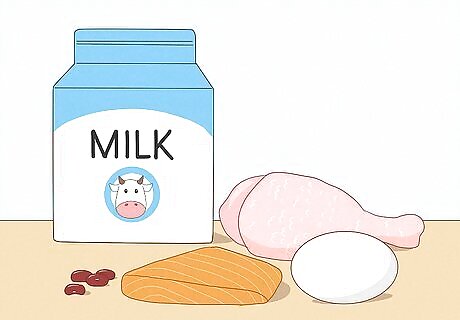
Incorporate eggs, dairy, poultry, seafood, beans, and tofu into your diet. Eat more protein to hold onto muscle while you lose weight. High-protein diets are also healthier overall than low-protein diets. Eat 50-70 grams of protein per day in total. Read nutrition labels to check how much protein is in specific foods and adjust your intake as needed.
Fill half your plate with vegetables or fruit for each meal.

Use veggies, fruit, and other low-calorie foods to fill yourself up. Divide the remaining half of your plate between grains like rice or pasta (¼ of your plate) and lean protein (¼ of your plate).
Eat slowly.
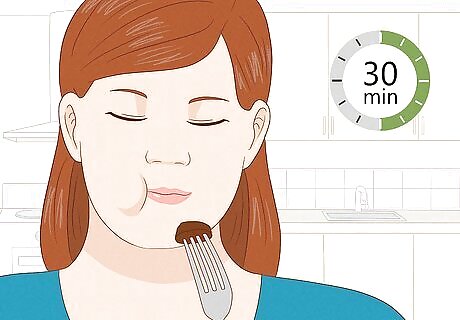
Pace yourself so that your meals last about 30 minutes. This will help you feel full with fewer calories. Set a timer, or put on a 30-minute episode of one of your favorite shows to enjoy with your dinner. Take small bites of your meal as you eat, savoring each bite as you go. Eating slowly can reduce your caloric intake by as much as 200 calories a day.
Measure your portions for each meal.

Use your hand to approximate portion sizes. For example, 1 cup (240 ml) is roughly the size of your closed fist, while your palm holds about 3 oz. (85 g) of meat. Use measuring cups or a food scale if you want to be super-precise. Check nutrition labels for specific portion sizes, or look up the serving sizes for specific foods. For a 2000 calorie diet, aim for around 2 cups (475 ml) of fruit per day, 2 ½ cups (590 ml) of veggies, 6 oz. (170 g) of grains, 5 ½ oz. (156 g) of meat or protein, and 3 cups of dairy.
Avoid liquid calories.
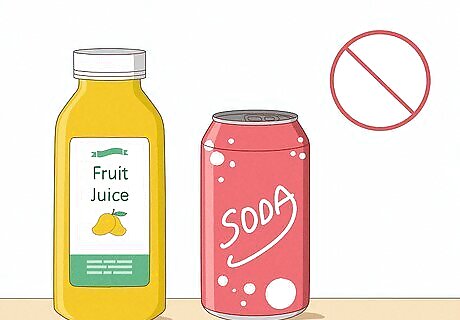
Cut back on soda, fruit drinks, and coffee sweeteners. These tend to have lots of added sugar and are usually low in vitamins and other nutrients. Swap soda for flavored (unsweetened) seltzers. Try low-calorie sweeteners, or cut back the amount of sugar you add to your coffee. Avoid sweetened iced teas and fruit juices. These have tons of sugar and calories.
Get plenty of fiber.
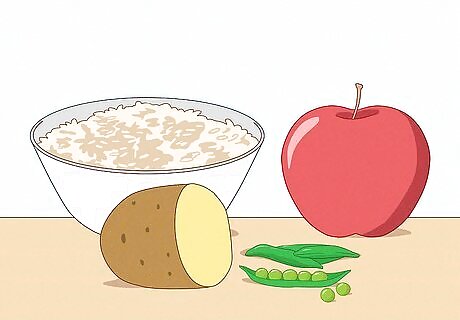
Eat high-fiber foods like beans, nuts, and whole grains. Fiber increases weight loss and improves your overall health by lowering your cholesterol and reducing your risk of developing type-2 diabetes. Make sure to get both soluble fiber (found in oats, beans, carrots, and apples) and insoluble fiber (found in beans, potatoes, and wheat bran) in your diet. Aim for roughly 30 grams of fiber per day, spread out over all your meals and snacks. Check nutrition labels for the fiber content of specific foods. Slowly add fiber to your diet over several weeks. Adding too much at once can cause abdominal gas, bloating, and cramping.
Avoid foods made with high-fructose corn syrup.
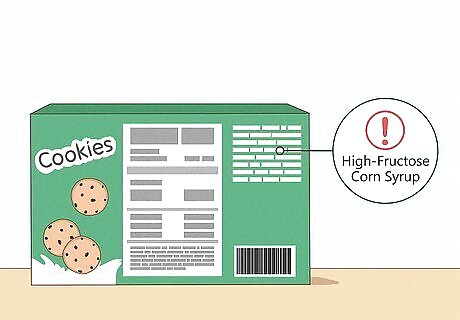
Choose foods made with natural sugar, or no sugar at all. Research suggests that high-fructose corn syrup causes more weight gain than natural sugar. Check the “ingredients” section of nutrition facts for high-fructose corn syrup. If you see it listed, it’s best to buy something else. High-fructose corn syrup is found in many processed foods, including canned soups, cereals, baked goods, desserts, yogurt, jellies, condiments, and fast food items. Fresh foods, like vegetables, fruits, and lean meats, won’t contain any high-fructose corn syrup.
Reduce your alcohol intake.

Cut back on beer, cocktails, and fruity wines. Booze is high in “empty calories,” meaning it has no nutritional value but still causes weight gain. Mixed drinks can also contain extra calories from sugar, mixers, and other ingredients. Avoid drinking alcohol on an empty stomach. This gets you tipsy faster, making it more likely that you’ll drink more and consume more calories in the process.
Cut back on processed foods.
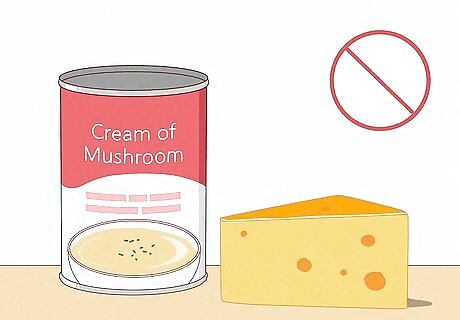
Avoid canned soups, cheeses, cereals, and microwavable meals. They’re usually high in calories, added sugar, and high-fructose corn syrup. Go with home-cooked meals made from fresh, unprocessed meats and vegetables. Not all processed foods are unhealthy. For example, frozen vegetables or dried fruit with no added ingredients are fine, though they may not be as nutritious as their fresh versions. Remember don’t rely on what the advertisement tells you, or what it says on the front of the package. The details of what you need to know is on the Nutrition Facts panel. Remember that not all frozen meals are the same. The biggest thing to watch out for when it comes to these kinds of food is the sodium content, fat content, sugar content, and added chemicals. Your body is always going to tell you what is right for you. The key is to listen. Too often we dismiss those uncomfortable digestive issues such as bloating, gas, constipation or diarrhea and go for an over the counter solution at the pharmacy. All of these can be a sign you are eating something your body doesn’t approve.
Try strength training.

Lift weights or do bodyweight exercises like pushups and squats. These help you maintain or even gain muscle mass, which in turn helps you burn calories. While cardio exercises like running or jogging may burn more calories in the short-term, strength training has been shown to burn more calories in the long run. Have a professional trainer teach you to lift weights or do bodyweight exercises correctly, if you’re not experienced. Many gyms have trainers who can instruct you on the basics for 1-2 sessions.
Move more throughout the day.
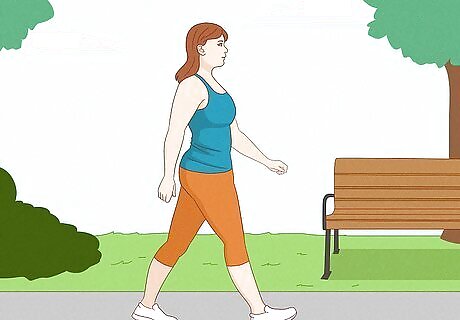
Set a step goal or take daily walks. Aim for between 4,000 and 7,500 steps per day—or about 2-4 miles (3.2-6.5 km). Choose walks that fit your lifestyle—for instance, walking your dog, strolling through a nearby park, or walking to and from your bus stop. Make movement a regular part of your routine. Use wearable fitness trackers and mobile apps to set daily goals and track your progress.
Do exercises that get your heart rate going
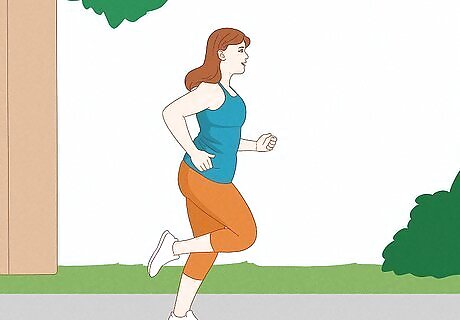
Try running, jogging, power walking, and other aerobic workouts. Exercises like these burn a ton of calories and drastically improve your health—a total win-win. They also improve your mood, reduce stress, and occasionally produce something called “runner’s high,” a kind of natural “rush” that feels absolutely fantastic. You can also try swimming, cycling, dancing, jumping rope, hiking, or climbing stairs. Join an exercise class if enjoy group activities. Check your local gym, or online, to see what classes and activities are available in your area. Hire a personal trainer if you want to some one-on-one guidance. Choose a trainer that fits your goals, budget, and learning style. Search online or check if your local gym offers one-on-one training with a membership.
Play a sport you enjoy.
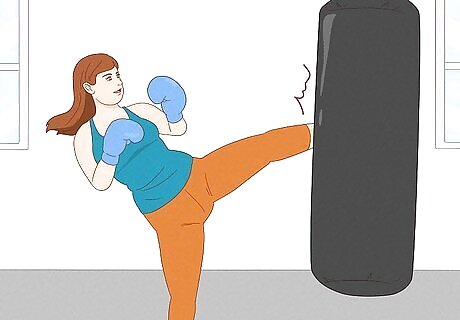
Try a solo sport or join a local sports club. Choose something that gets your heart going, like tennis, rowing, boxing, basketball, or martial arts, to name just a few options. Or find a local sports club that suits your interests. Any sport or game that gets your heart pounding will help you burn calories—and as a bonus, you could even make a few new friends. Try 5ks, 10ks, and other races or goal-oriented activities. Try programs like Couch to 5k to train yourself at home.
Stay well-hydrated.
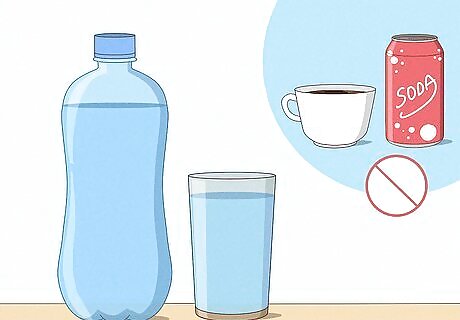
Drink plenty of water throughout the day. Not only is water essential for your health, but it also suppresses your appetite, stimulates your metabolism, and helps your body burn fat. Aim for around 11-15 cups (2.5 - 3.5 L) of water per day—preferably from fresh water, not soda, coffee, or other drinks. Check your urine to see if you’re getting enough water. Your urine should be light yellow. If it’s dark yellow, drink more water.
Sleep at least 8 hours every night.
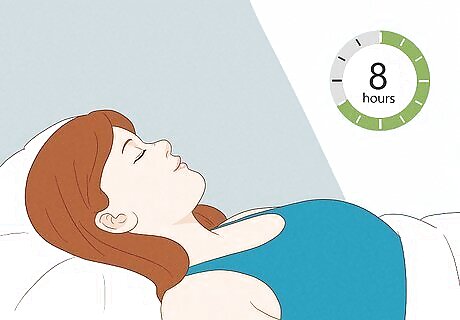
Get restful sleep to reduce your daily calorie intake. Studies suggest that getting poor sleep increases your daily caloric intake, while proper sleep reduces it. Getting good sleep could also improve your mood and overall health, increasing the chances that you’ll successfully stick with your weight loss regimen. Practice good “sleep hygiene” by going to bed at the same time every night. Use a wearable sleep tracker to monitor your habits and quality of sleep.
Be patient and kind to yourself
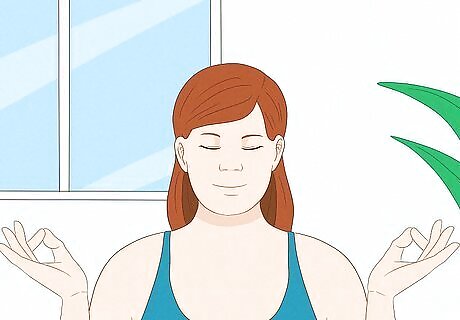
Remember: weight loss takes time and isn’t a straightforward process. It may take a while to achieve your desired weight, but you’ll look thinner and feel fitter long before you hit your goal. Remember that your weight will fluctuate a lot—sometimes by as much as 5 pounds in a single day. Don’t worry. If you eat well, exercise, drink plenty of water, and get enough rest, your weight will slowly decline over the long run. Weigh yourself once a week to track your progress. You can weigh yourself every day if you like, but remember that your weight will fluctuate depending on many factors, like water retention. Track your weight loss over several months to give yourself a clear picture of your progress.















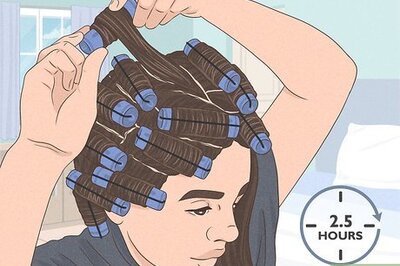

Comments
0 comment